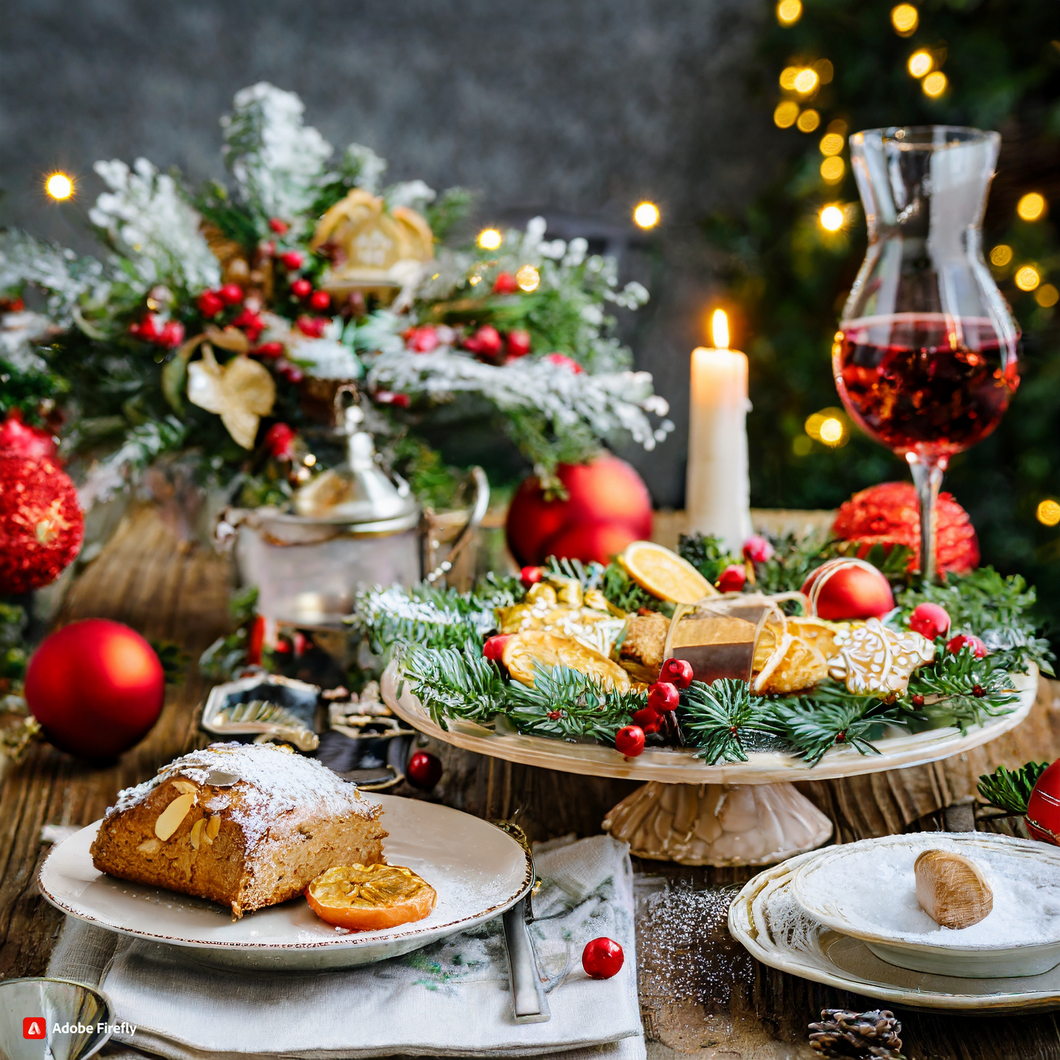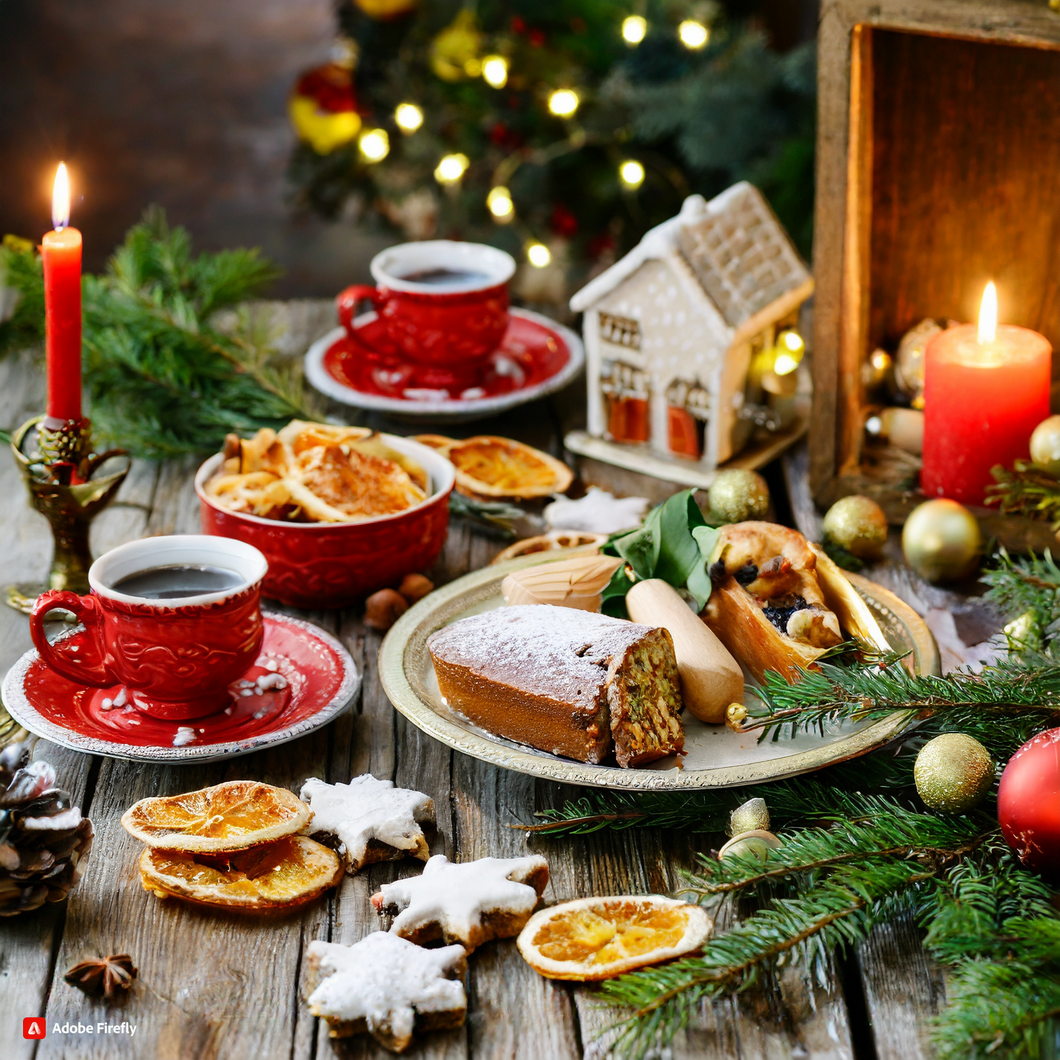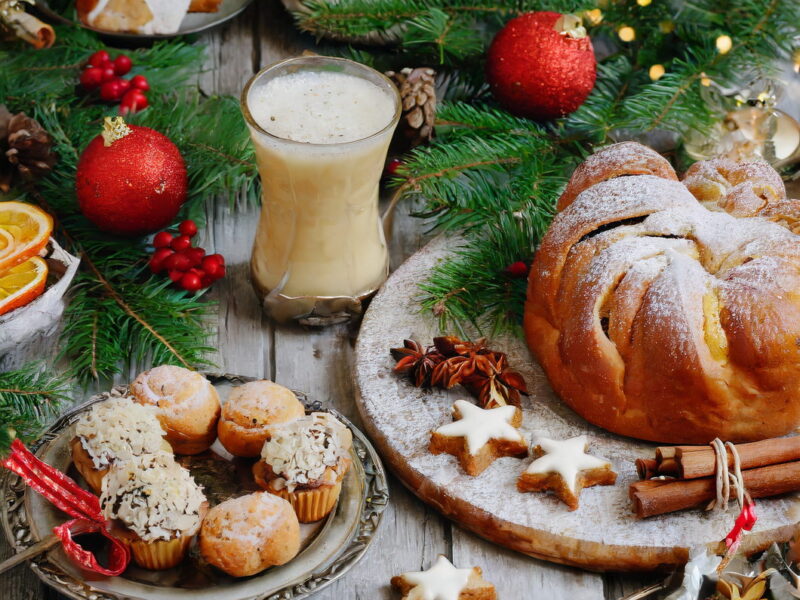Introduction
Christmas is a holiday celebrated all around the world, but each culture has its own unique traditions and customs. In Europe, Christmas is a time of joy, family gatherings, and delicious food. From the festive markets to the elaborate decorations, European Christmas Traditions are a sight to behold. In this article, we will delve into the cultural delights of European Christmas Traditions and discover the rich history and meaning behind them. So, let’s unwrap the magic of Christmas in Europe and explore the traditions that make this holiday season so special.
The History of European Christmas Traditions: A Festive Tradition
As the holiday season approaches, Europe transforms into a winter wonderland filled with twinkling lights, festive decorations, and the sweet aroma of mulled wine and roasted chestnuts. One of the most beloved traditions in Europe during this time of year is the Christmas market. These markets have been a part of European culture for centuries, and they continue to be a highlight of the holiday season for locals and tourists alike. In this article, we will take a closer look at the history of Christmas markets in Europe and how they have become a festive tradition.

The origins of Christmas markets can be traced back to the Late Middle Ages in Germany. The first recorded Christmas market was held in Dresden in 1434, and it was known as the “Striezelmarkt.” This market was named after the traditional Christmas bread, “Striezel,” which is now known as Stollen. The Striezelmarkt was a place for locals to gather and purchase goods for the holiday season, such as food, decorations, and gifts.
Over time, Christmas markets spread throughout Europe, with each country adding its own unique touch to the tradition. In France, the Christmas market is known as “Marché de Noël,” and it is a popular attraction in cities like Paris, Strasbourg, and Lille. In Italy, the market is called “Mercatino di Natale,” and it is a cherished tradition in cities like Rome, Florence, and Milan. Each market offers a variety of local products, traditional foods, and handmade crafts, making it a perfect place to find unique gifts for loved ones.
One of the most iconic features of Christmas markets in Europe is the wooden stalls adorned with twinkling lights and festive decorations. These stalls are where vendors sell their goods, and they are a sight to behold. The stalls are often decorated with traditional holiday symbols, such as Christmas trees, snowflakes, and nativity scenes. The atmosphere is lively and cheerful, with Christmas music playing in the background and the smell of delicious food filling the air.
Aside from the shopping and festive atmosphere, Christmas markets also offer a variety of activities and entertainment. Many markets have ice skating rinks, Ferris wheels, and other carnival rides for children and adults to enjoy. There are also live performances, such as carol singers, street performers, and traditional dance groups. These activities add to the festive spirit of the markets and make them a fun experience for the whole family.
Another important aspect of Christmas markets is the food. Each country has its own traditional holiday treats, and these can be found in abundance at the markets. In Germany, you can find bratwurst, gingerbread, and glühwein (mulled wine). In France, you can indulge in crepes, roasted chestnuts, and vin chaud (hot wine). And in Italy, you can savor panettone, torrone (nougat), and cioccolata calda (hot chocolate). These delicious treats are a must-try when visiting a Christmas market in Europe.
In recent years, Christmas markets have become a popular tourist attraction, drawing visitors from all over the world. They offer a unique cultural experience and a chance to immerse oneself in the holiday traditions of different countries. The markets also provide a boost to the local economy, as small businesses and artisans rely on them for a significant portion of their annual income.
In conclusion, the history of Christmas markets in Europe is a rich and festive one. From its humble beginnings in Germany to its widespread popularity throughout the continent, these markets have become an integral part of the holiday season. They offer a unique blend of shopping, entertainment, and culinary delights, making them a must-visit for anyone looking to experience the magic of Christmas in Europe. So, bundle up, grab a cup of hot mulled wine, and get ready to explore the enchanting world of European Christmas markets.
European Christmas Traditions Foods: From Stollen to Panettone
As the holiday season approaches, many people around the world are getting ready to celebrate Christmas. While the holiday is celebrated in different ways across the globe, there are certain traditions that are unique to Europe. One of the most delightful aspects of European Christmas Traditions is the food. From sweet treats to savory dishes, the holiday season is a time for indulging in delicious and traditional foods. In this article, we will take a closer look at some of the most popular traditional European Christmas foods.
Stollen is a traditional German Christmas bread that is a staple in many households during the holiday season. This sweet bread is made with dried fruits, nuts, and spices, and is often topped with powdered sugar. Stollen is believed to have originated in Dresden, Germany, and has been a part of Christmas celebrations since the 15th century. The shape of the bread is said to represent the baby Jesus wrapped in swaddling clothes. Stollen is not only delicious but also has a rich history and symbolism behind it.

Another popular Christmas treat in Europe is Panettone, a sweet bread originating from Italy. This dome-shaped bread is made with candied fruits, raisins, and sometimes chocolate chips. It is often served with a warm cup of coffee or hot chocolate and is a favorite among many during the holiday season. Panettone is believed to have been created in Milan, Italy, in the 15th century and has since become a beloved Christmas tradition in many European countries.
In France, the traditional Christmas dessert is the Bûche de Noël, also known as a Yule log. This delicious cake is shaped like a log and is made with chocolate sponge cake, filled with cream, and covered in chocolate frosting. The Bûche de Noël is often decorated with meringue mushrooms and powdered sugar to resemble a real log. This dessert has been a part of French Christmas celebrations since the 19th century and is a must-have for many families during the holiday season.
Moving on to savory dishes, one cannot talk about traditional European Christmas foods without mentioning roast goose. This dish has been a part of Christmas celebrations in Germany since the 16th century and is still a popular choice for Christmas dinner. The goose is stuffed with apples, onions, and herbs, and is roasted to perfection. It is often served with red cabbage and potato dumplings, making for a hearty and delicious meal. Read Recipes for Special Occasions.
In Italy, the traditional Christmas dinner is a feast known as the Feast of the Seven Fishes. This meal consists of seven different seafood dishes, representing the seven sacraments of the Catholic Church. The dishes can vary from region to region, but some popular choices include baccalà (salted cod), calamari, and shrimp. This feast is a way for families to come together and celebrate the holiday while enjoying a delicious and traditional meal.
No Christmas celebration in Europe is complete without mulled wine. This warm and spicy drink is a staple at Christmas markets and gatherings throughout the holiday season. It is made with red wine, spices, and sometimes fruit, and is served hot. Mulled wine has been a part of European Christmas Traditions since the Middle Ages and is a must-try for anyone looking to experience the true flavors of the holiday season.
In conclusion, traditional European Christmas foods are not only delicious but also hold a significant cultural and historical significance. From sweet treats like Stollen and Panettone to savory dishes like roast goose and the Feast of the Seven Fishes, these foods bring families and communities together to celebrate the holiday season. So, this Christmas, why not try incorporating some of these traditional European dishes into your own celebrations and experience the cultural delights that they have to offer.
Celebrating Christmas in Europe: Customs and Traditions Across the Continent
Christmas is a magical time of year, filled with joy, love, and traditions. And in Europe, these traditions are deeply rooted in the culture and history of each country. From festive markets to delicious food, there are countless ways to celebrate Christmas across the continent. So, let’s take a journey through Europe and discover the unique customs and traditions that make this holiday season so special.
Starting in Germany, we find one of the most iconic Christmas traditions – the Christmas market. These markets can be found in almost every town and city, with rows of wooden stalls selling handmade gifts, decorations, and delicious treats. The smell of roasted chestnuts and mulled wine fills the air, and the sound of carolers can be heard in the background. It’s a truly magical experience that brings people together to celebrate the holiday season.
Moving on to France, we find another beloved tradition – the Yule log. This delicious dessert is made of chocolate and shaped like a log, representing the traditional Yule log that was burned in the fireplace on Christmas Eve. It’s a decadent treat that is enjoyed by families and friends after their Christmas dinner. And speaking of dinner, the French also have a unique tradition of serving 13 desserts on Christmas Eve, representing Jesus and his 12 apostles.

In Italy, Christmas is celebrated with a feast of seven fishes on Christmas Eve. This tradition, known as the Feast of the Seven Fishes, originated in Southern Italy and has spread throughout the country. The dishes served vary from region to region, but the number seven is significant as it represents the seven sacraments of the Catholic Church. It’s a time for families to come together and enjoy a delicious meal before attending midnight mass.
Heading north to Sweden, we find a tradition that is both beautiful and heartwarming – St. Lucia Day. On December 13th, the eldest daughter in the family dresses in a white gown with a red sash and a crown of candles on her head. She then wakes up her family with coffee and saffron buns, symbolizing light and hope during the darkest time of the year. It’s a celebration of light and love, and a reminder to spread kindness and joy during the holiday season.
In Spain, Christmas is celebrated with a unique tradition called El Gordo, which translates to “the fat one.” It’s the world’s largest lottery, with millions of euros in prizes. Families and friends gather around the TV on Christmas Eve to watch the drawing and hope for a lucky win. It’s a fun and exciting way to celebrate the holiday season, and the winners are sure to have a very merry Christmas.
And of course, we can’t talk about European Christmas Traditions without mentioning the famous Christmas markets in Austria. These markets are known for their stunning decorations, delicious food, and handmade gifts. But what makes them truly special is the tradition of Krampus. This mythical creature, with its terrifying appearance, is said to accompany St. Nicholas and punish naughty children. It’s a unique and slightly scary tradition that adds a touch of excitement to the holiday season.
As we can see, Christmas in Europe is a time of celebration, togetherness, and unique traditions. From markets to feasts, each country has its own way of honoring this special time of year. And while these traditions may differ, they all share the same message of love, joy, and spreading kindness. So, whether you’re in Germany, France, Italy, Sweden, Spain, or Austria, one thing is for sure – you’ll experience a Christmas like no other.
Q&A – European Christmas Traditions
1) What are some common Christmas traditions in Europe?
Some common Christmas traditions in Europe include decorating Christmas trees, exchanging gifts, attending church services, and enjoying festive meals with family and friends.
2) How do different European countries celebrate Christmas?
Different European countries have their own unique Christmas traditions. For example, in Germany, children leave out their shoes on December 5th for St. Nicholas to fill with treats. In Italy, families gather for a big feast on Christmas Eve. In the UK, Christmas crackers are a popular tradition, where small gifts and jokes are hidden inside paper tubes that are pulled apart with a loud pop.
3) Are there any specific foods or drinks that are associated with Christmas in Europe?
Yes, there are many traditional foods and drinks associated with Christmas in Europe. Some examples include mulled wine in Germany, mince pies in the UK, and panettone in Italy. In many countries, a roast turkey or goose is a common main dish for Christmas dinner. Different regions also have their own unique specialties, such as gingerbread in Germany and bûche de Noël (Yule log cake) in France.
Conclusion for European Christmas Traditions
In conclusion, European Christmas Traditions are a rich and diverse blend of cultural delights that have been passed down for generations. From the festive markets and delicious food to the religious customs and folklore, these traditions bring people together and create a sense of warmth and joy during the holiday season.
Whether it’s the lighting of the Christmas tree in Germany, the Feast of the Seven Fishes in Italy, or the visit of Sinterklaas in the Netherlands, each country has its own unique way of celebrating Christmas. These traditions not only showcase the cultural heritage of Europe, but also remind us of the true spirit of Christmas – love, togetherness, and giving. So, let us embrace and appreciate these traditions, and continue to pass them on to future generations.
Please follow us on linkedin. You can learn all best canadian food recipes you can check our Culinary 1TouchFood Youtube and Telegram 1TouchFood page. Don’t forget Fighting Obesity Magazine and Radio Cooking.

